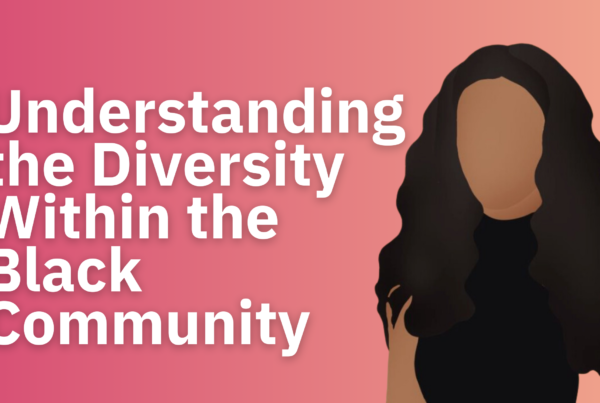Key Takeaways
- Not a Buzzword But a Strategic Imperative – workforce diversity is not just a buzzword but a strategic imperative for businesses.
- Proper Implementation Is Crucial -Just shouting “diversity” does not actually make you a diverse company.
- Diverse Workforce Yields Tangible Benefits-Studies consistently show that diverse teams make smarter decisions, fostering innovation and providing a competitive edge.
Businesses need to recognize that workforce diversity is not just a buzzword but a strategic imperative. Businesses need to focus on the significance of diversity and its evolving landscape. Businesses that continue to use the word diversity but lack it’s proper implementation will inevitably face a downward spiral. Here’s a guide to understanding diversity and how to properly implement it in your business.
What is Diversity?
Let’s start with defining what diversity is. Diversity encompasses a spectrum of characteristics, perspectives, and approaches that individuals bring to the workplace. This includes visible attributes such as age, gender, race, and abilities, as well as non-visible aspects like cultural and socio-economic backgrounds. These diverse elements contribute to the cultural identity within a group, shaping values, attitudes, and behaviors.
As we step into 2024, global demographic trends continue to reshape the workforce. The exponential growth in the working-age population in developing countries, coupled with shifting gender roles worldwide, necessitates a reevaluation of traditional workplace norms. The labor force is becoming increasingly diverse, with Asia and Africa emerging as significant contributors.
Who run the world? – Girls!
The participation of women in the workforce has been a transformative aspect of workplace diversity. From challenging gender barriers during World War II to becoming the majority of bachelor’s and master’s degree earners today, women have played a pivotal role. The evolving service economy further emphasizes the need for workplaces to adapt to the changing dynamics, accommodating the unique needs of a diverse workforce. Although we have seen a great deal of improvement in this area, women are still striving for more and better representation in all fields.

The benefits of a diverse workforce extend far beyond mere representation. Businesses that prioritize diversity experience improved marketing and customer service, enhanced employee morale, and increased productivity. Studies consistently show that diverse teams make smarter decisions, fostering innovation and providing a competitive edge in the market. This all stems from the fact that the team providing these improved decisions have different backgrounds and life experiences, enriching their world view and providing a broad spectrum of ideas to come about.
In the quest for a truly diverse workforce, the inclusion of individuals from various races, cultures, and ethnicities stands out as a pivotal aspect. A cornerstone for the 2024 workforce should be embracing this rich tapestry of diversity.
Diverse means EVERYONE!
Creating an inclusive workplace goes beyond gender diversity. It extends to accommodating individuals of different races and cultures as well as individuals with disabilities, ensuring a comfortable environment for all. Simple adjustments, such as flexible hours and improved accessibility, not only benefit employees but also contribute to a company’s competitiveness in attracting skilled workers.
Embracing individuals from all races, cultures, and backgrounds nurtures a positive and inclusive company culture. When employees witness an authentic commitment to diversity, it fosters a sense of belonging and pride. This inclusive culture not only boosts morale but also enhances teamwork and collaboration. Employees feel valued for their individuality, creating a workplace where diverse talents can thrive collectively.In an era of global connectivity, businesses must mirror the diversity of their customer base. Having a workforce that reflects a broad spectrum of races, cultures, and backgrounds positions a company to understand and respond effectively to the unique needs of diverse markets. It ensures that products and services resonate with a wide range of consumers, fostering stronger connections and brand loyalty.Embracing individuals from all races, cultures, and backgrounds nurtures a positive and inclusive company culture. When employees witness an authentic commitment to diversity, it fosters a sense of belonging and pride. This inclusive culture not only boosts morale but also enhances teamwork and collaboration. Employees feel valued for their individuality, creating a workplace where diverse talents can thrive collectively.

Now that we know a little more about what an actual diverse workplace is, you might be wondering how to get there. Don’t worry, we’ve got you!
Here are essential steps to ensure effective implementation and foster a workplace that celebrates differences and promotes inclusivity:
1. Leadership Commitment:
- Actionable Policies: Ensure that leadership commits to fostering diversity through clear and actionable policies. This commitment should be reflected in the company’s mission, values, and strategic goals.
2. Education and Training:
- Diversity Training Programs: Implement training programs that educate employees about the importance of diversity, equity, and inclusion. This should address unconscious biases and promote cultural competence.
3. Inclusive Recruitment Practices:
- Diverse Recruitment Teams: Form diverse recruitment teams to eliminate biases in the hiring process. Ensure that job descriptions are inclusive and appeal to a broad range of candidates.
4. Eliminate Bias in Evaluation:
- Blind Recruitment: Consider implementing blind recruitment processes where applicant names and identifying information are removed during the initial screening. This reduces the chance of unconscious bias influencing decisions.
5. Create Inclusive Policies:
- Flexible Work Policies: Develop flexible work policies that accommodate diverse needs, such as different cultural holidays, family structures, and work preferences. This promotes a work-life balance for all employees.
6. Target Multicultural Audiences
- Incorporate multicultural marketing strategies in your strategy plan in order to cater to all your customers. Excluding a large group of people that could potentially be valuable customers is a big mistake companies continue to make. Read more about why you need multicultural marketing here.
9. Inclusive Communication:
- Cultural Competence Training: Provide training on cultural competence for all employees to foster understanding and respectful communication. Ensure that all communication channels are inclusive.
10. Accessibility and Accommodations:
- Accessible Workspaces: Make physical and digital workplaces accessible to individuals with disabilities. Implement accommodations that ensure everyone can perform their roles effectively.
11. Performance Metrics:
- Include Diversity Metrics: Integrate diversity metrics into performance evaluations for leadership and management. Tie performance incentives to the achievement of diversity and inclusion goals.
13. Community Engagement:
- Community Partnerships: Engage with external organizations and communities to build relationships and contribute to initiatives that support diversity and inclusion beyond the workplace.
Diversity as ROI
Investing in diversity yields tangible financial benefits. Companies prioritizing diversity outperform their counterparts, as evidenced by higher returns on equity and shareholder value. The positive impact on corporate performance and reputation underscores the link between diversity initiatives and sustained competitive advantage.
Of the 2006 DiversityInc Top 50 Companies for Diversity, 42 were publicly traded, and had a 24.8% higher return than the Standard & Poor’s 500 when measured over 10 years with dividends reinvested[8]. Similarly, in a 2004 study[9] , Catalyst Inc. found that of the 353 companies that were included among the Fortune 500 for four out of five years between 1996 and 2000, Return-on-Equity was 35% higher and Total Return to Shareholders was 34% higher for companies with the strongest representation of women on executive-leadership teams, compared to companies with the lowest representation. A 2003 study, found that Nextel Communications Inc. was able to achieve an ROI of 163% on their diversity training investment as a result of improved retention and employee performance.
Here’s just a few reasons why a diverse workforce should be your 2024 priority:
- Increased Creativity and Innovation: A diverse team brings different perspectives and experiences, leading to a broader range of ideas and solutions to challenges.
- Better Decision Making: Diverse teams process facts more carefully and objectively, leading to better outcomes.
- Higher Employee Engagement: Companies that emphasize diversity often have employees who feel valued and recognized, leading to increased motivation and commitment.
- Broader Skill Set: Different backgrounds bring varied skills, talents, and experiences, which can be beneficial for team tasks and problem-solving.
- Reduced Employee Turnover: An inclusive environment can increase job satisfaction, loyalty, and retention, reducing the costs and disruptions of high turnover.
- Improved Employee Performance: Employees in a diverse workplace tend to perform better as they feel more accountable for their performance.
- Enhanced Company Reputation: Being known as an “employer of choice” that emphasizes diversity can make it easier to recruit top talent.
- Improved Customer Orientation: A diverse team can better understand and cater to the needs of various customer bases.
- Increased Market Share: Companies prioritizing diversity are better equipped to serve global markets and cater to a broader range of customers.
- Positive Business Reputation: The public often sees Inclusive Organizations more positively, improving brand image and reputation.
- Access to Global Markets: Diverse teams, especially those with multilingual members or individuals familiar with various cultures, can better navigate and penetrate international markets.
- Enhanced Innovation: Diversity, combined with inclusion, often leads to increased innovation, giving companies a competitive edge in developing new products or services.
- Risk Management: A diverse workforce can anticipate and respond to a broader array of potential business risks from a wider pool of experiences and backgrounds.
- Financial Performance: Multiple studies have indicated that companies with more diverse workforces are more profitable and have better financial performance.
As we are already into 2024, the imperative for businesses to embrace workforce diversity has never been more crucial. Beyond being a moral obligation, it is a strategic move that enhances innovation, decision-making, and overall business performance. By making diversity a top priority, businesses can position themselves as leaders in an inclusive and forward-thinking global economy.


